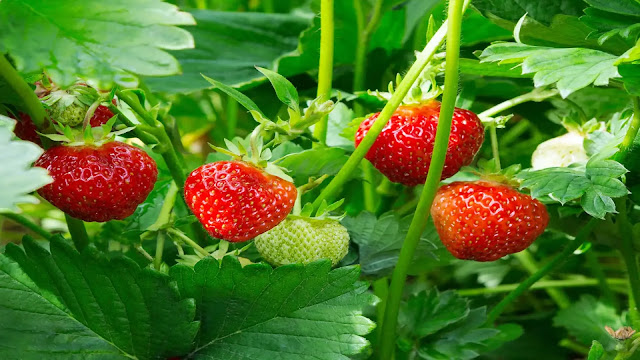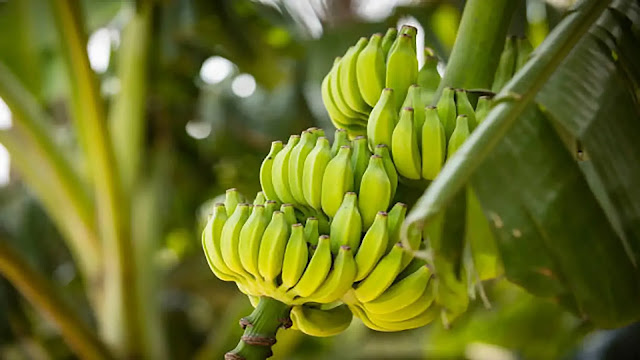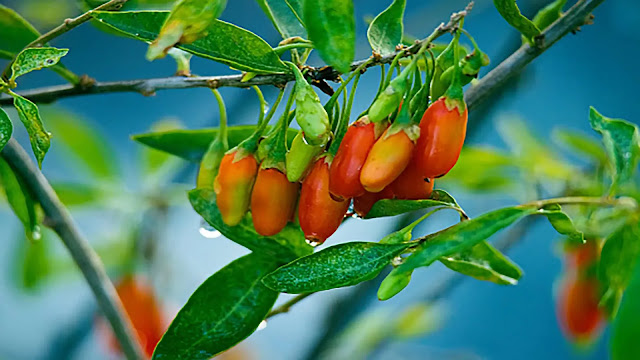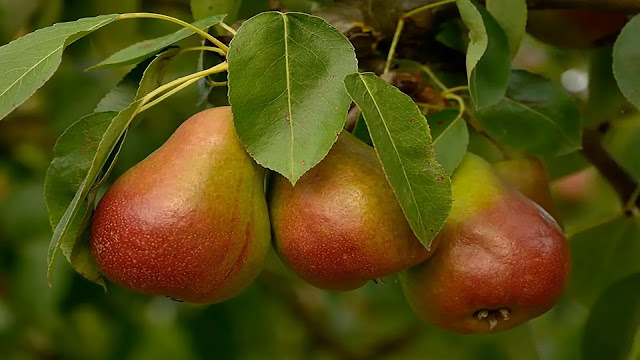If you want to grow fruits in your home garden, even if you're a beginner or have a restricted area, before you plant, put some thought into which fruits grow best in your climate, which fruits grow well in your area, and the best way to put them in your garden. Here are 10 of the simplest fruits to grow in your very own fruit garden.
1 - Strawberries
Strawberry plants are versatile fruits that thrive in terrace containers, hanging baskets, window boxes, or the ground—just make sure they are planted in a sunny and well-drained location. Grow strawberry full-season assortment packs for 3 fashionable varieties to reap throughout June and July.
2 - Raspberries
Raspberries are one of the simplest fruits to grow in the home garden. Once you recognize a way to grow and take care of raspberries, you will be providing the neighborhood with summer fruit. The primary step in growing raspberries is selecting the proper kind for you. Raspberries are available in 2 categories: summer bearing and fall bearing. Raspberries are vigorous growers and can produce runners that refill a bed. If you would like to keep your raspberry brambles on a smaller scale, grow them in containers. Raspberry bushes can be harvested from the summer solstice through the fall due to their various ripening times and colors.
3 - Blueberries
Blueberries thrive on neglect—in reality, you’ll usually notice blueberries growing in the middle of the forest. They’re easy to worry about as long as you've got wet, acidic soil. For best results, opt for a pollination selection – then sit back and watch for fruit. Blueberries tend to begin manufacturing within the third year of growth.
4 - Cherries (Prunus avium)
Cherries are one of the simplest fruit trees to grow and take care of. They need little to no pruning and are seldom laid low by pests or diseases. Sweet cherries are planted in the spring and require two trees for cross-pollination unless you plant a tree with two completely different varieties grafted on it. You'll depart with only 1 tree if you're growing bitter baking cherries.
5 - Bananas
You can really get a dwarf possibility of an everyday banana plant. They're perennials, so you merely have to be compelled to plant them once if you prune them back and carry them inside throughout the winter to safeguard the plants from frost.
You Might Also Enjoy This.
6 - Goji Berries
Goji berries are the proper alternative for a windy, coastal garden, being fairly hardy and tolerant of salt. Grow your goji berry bush against a south-facing wall, or in a protected sunny spot, to give the fruit the simplest conditions for ripening in August. Goji berry ‘Synthia’ reaches a height and spread of 2 m, with berries that show a rather higher than usual sugar content. Plant the larger goji berry ‘Sweet Lifeberry’ in a bed with lots of area to sprawl.
7 - Apple
The apple is the most generally custom-made of all temperate-zone, easy-to-grow fruit trees. If planted fully in the sun and well-drained soil, fruit trees can mature to produce enough fruit to supply many families with bushels of fruit. Expect to wait 3 to 5 years after planting for your initial full harvest, though you'll get stray fruit before then. Apples are some of the simplest fruit trees that will grow in pots—as long as you decide on dwarf varieties, they will not become too large for the containers.
8 - Honeyberries
Honeyberries are powerful, resilient plants that manufacture berries that are packed to the brim with nutritive antioxidants. These berries are nice to snack on directly from the bush, but they also work well in smoothies. Honeyberry shrubs can be grown either in containers or in the ground. As long as you've got full sun and well-draining soil (along with good circulation), you shouldn’t have to do much else. Grow them in pairs for the simplest probability of fertilization.
9 - Figs (Ficus carica)
Fig trees are astonishingly simple to grow, either in the ground or in containers. They do not need abundant pruning and are sometimes pest-free. Plant a tree throughout its dormancy period, which happens in the early spring or late fall. If you decide to grow your tree during a season and move it inside for the winter, keep the instrumentality to a minimum.
10 - Dwarf Pears










